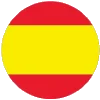
 ENGLISH
ENGLISH
 ENGLISH
ENGLISH

Are you between 18 and 25 years old? Call for workshop/performance
Ofrenda para el monstruo is a project consisting of a workshop for young people aged 18 to 25 and the presentation of a performance within the framework of the Festival de Otoño, organized by Escena Móstoles
Where? The workshop will take place at Teatro del Soto (Móstoles), and the performance will be presented at the Teatro del Bosque on November 21, and at the Sala Roja Concha Velasco of Teatros del Canal on November 23.
Who is it for? This process is aimed at young people aged 18 to 25 with experience in the performing arts who are about to complete their studies or have recently graduated.
Check out all the information and sign up here!
Ofrenda para el monstruo by Tamara Cubas is a project working with young people, aged between 18 and 24, who take part in a shared process where they practice autonomy as a path to liberating their bodies and their being.
This work presents youth as a clash between past, present and future, a collision that becomes a monstrous force within them, heightening their ability to affect both the other and the Other. The piece unfolds as a score of actions, with each participant tasked with designing, integrating and negotiating their actions with the others, creating an intense and powerful choreography.
In the anteroom, a series of photographic portraits taken during the workshop are exhibited, guided by the premise of alleviating the self. The work becomes a ritual between the old body and the new body that emerges, with the latter offered to the audience in the epilogue of the piece.
The Uruguayan artist continues her renowned exploration of the body and the search for autonomy through dance, a practice she carries out with both professional artists and non-artistic communities.
Her work is nourished by her own lived experience and her ties to her country’s political processes, making themes of history, homeland, power, politics, and the relationships between people and others recurring concerns in her practice, presented across performance and installations.
Her most recent works include Trilogía Antropopofágica, Multitud, Caníbal Serie, and this Ofrenda para el monstruo, which she brings to the Festival de Otoño.
As she has done previously when presenting this work in Belgium, the Netherlands, Switzerland, Greece, Chile and Uruguay, Cubas will hold an open call to gather the young people who will take part.
In a stage space without tiers, the audience will gather around the performers, facing a group of young people who dare to open themselves to the world and its complexity, to erupt with desire, to provoke movement, and to propose the exercise of surrendering ourselves to the transformation they awaken within us.
For Tamara Cubas, this collision unleashes a “monstrous” force, with “the monster” taking the shape of a combination previously impossible to configure. It is an opening towards the abyss of this new formulation that must, by necessity, emerge.